The official Windows solution for the Preparing Automatic Repair loop is to either update or reset your PC directly. Here’s how the repair process works: On the Preparing Automatic Repair screen, press the power button three times to force the computer to shut down. Upon restarting, the system will initiate the repair process.
Many Windows 10 users face the frustrating Automatic Repair loop issue, which is caused by corrupted Windows system files that prevent the system from booting properly. This results in a continuous reboot cycle, leaving the computer stuck.
In this article, we’ll explain the cause of the issue, how to fix it, and what to do if you can’t boot into Windows at all. Let’s dive in!
What Triggers the “Preparing Automatic Repair” Loop on Windows 10?
The “Preparing Automatic Repair Windows 10 Stuck” screen typically appears after an unexpected shutdown or system crash. When your system encounters an error, Windows 10 attempts to repair the damaged files during the next boot.
However, in some cases, the automatic repair process fails, causing your computer to remain stuck on the “Preparing Automatic Repair” screen with no progress. Despite restarting the computer, it never advances beyond this screen.
This error is quite common on Windows 10, Windows 11, Windows 8.1, Windows 8, and even Windows 7. Several possible causes for this issue include:
- Problems with the Windows Registry (such as missing or incorrect keys)
- File corruption in the Windows Boot Manager (BOOTMGR)
- Missing or damaged system files, often due to malware infections
- Issues with hardware drivers, including outdated or missing drivers
- Other unknown system issues
No matter the cause, our step-by-step guides below will help you resolve the issue and get your system running again. Let’s dive in and explore the solutions.
How to Fix Windows 10 Stuck in the “Preparing Automatic Repair” Loop
How to Fix Windows 10 Stuck in the “Preparing Automatic Repair” Loop
Here are some effective methods to resolve the Windows 10 Automatic Repair loop issue:
Method 1: Perform a Hard Reboot
Before attempting more advanced troubleshooting, try performing a hard reboot to resolve the issue. Here’s how to do it:
- Turn off your computer completely by pressing the Power button. Ensure the screen turns off, and the computer fans stop spinning.
- Unplug all peripherals, including USB flash drives, external hard drives, headphones, and any other devices.
- If you’re using a laptop with a detachable battery, remove the battery from the compartment.
- To drain any remaining charge from the capacitors, press and hold the Power button for about 30 seconds.
- Reinsert the battery (if removed) and reconnect the power adapter to your computer. Avoid plugging in any USB devices at this stage.
- Press the Power button again to turn the computer on and check if the Windows 10 stuck on the “Preparing Automatic Repair” screen issue is resolved.
If this method doesn’t work, continue with the solutions below.
Method 2: Boot Your Computer in Safe Mode to Fix the Automatic Repair Loop
If you’re facing Windows 10 Automatic Repair loop issues and your system crashes before completing the boot process, booting into Safe Mode can be a helpful solution.
Here’s how to check if Safe Mode resolves the issue:
- Reboot your computer and hold the F8 key while the boot screen is visible to access the Windows Recovery Environment (WinRE). On some devices, you may also need to hold the Fn (function) key.
- Navigate to See advanced repair options > Troubleshoot > Advanced options > Startup Settings > Restart.
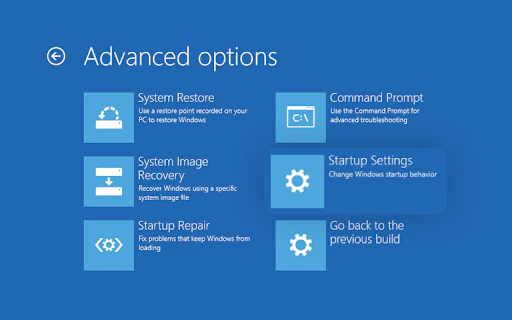
- After the restart, you’ll be presented with multiple restart options. Press F5 to enable Safe Mode with Networking.
- Wait for your system to restart, and check if it successfully boots without encountering the “Preparing automatic repair” screen.
If you successfully boot into Safe Mode, you can use Windows 10’s built-in tools for further troubleshooting. For example, running a Windows Defender scan for malware is a great next step.
Method 3: Rebuild BCD Using Command Prompt to Fix the Automatic Repair Loop
A common cause of the “Preparing automatic repair” loop is missing or damaged boot files. In such cases, rebuilding key system components through Command Prompt can help resolve the issue.
Note: This method assumes you’re unable to boot into Windows, even in Safe Mode. If you can access your desktop, you can open Command Prompt by searching for it in the taskbar.
Here’s how to rebuild the BCD (Boot Configuration Data):
- Reboot your computer and hold the F8 key while the boot screen is visible to enter the Windows Recovery Environment (WinRE). On some devices, you may need to hold the Fn (function) key as well.
- Select Repair your computer, then click on Troubleshoot.
- A list of advanced options will appear. Choose Command Prompt, and wait for it to load. A black window should appear.
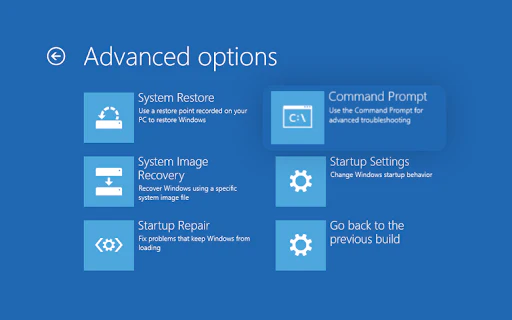
- Type the following commands one by one, pressing Enter after each:
- bootrec /fixmbr
- bootrec /fixboot
- bootrec /scanos
- bootrec /rebuildbcd
- Once you see the message “Successfully scanned Windows installations”, type exit and press Enter to close Command Prompt.
- Reboot your computer and check if the “Preparing automatic repair” loop is resolved during the boot process.
This procedure should help rebuild the BCD and fix the Windows 10 automatic repair loop.
Method 4: Disable Automatic Repair at Boot to Resolve the Loop
If your Windows 10 system appears to be functional but gets stuck in the Automatic Repair loop, you can try disabling the Automatic Startup Repair feature. This will prevent your computer from entering the repair cycle and allow it to boot normally.
Note: This method is only effective if your system is functional behind the startup repair screen. If there’s a critical system error, you won’t be able to troubleshoot using this method.
Here’s how to disable Automatic Repair during boot:
- Reboot your computer and press the F8 key during boot to enter the Windows Recovery Environment (WinRE). On some devices, you may need to press the Fn (function) key along with F8.
- Click on Repair your computer, then select Troubleshoot.
- A list of advanced options will appear. Choose Command Prompt and wait for it to load. A black window should open.
- Type the following command and press Enter:
- bcdedit /set {default} recoveryenabled no
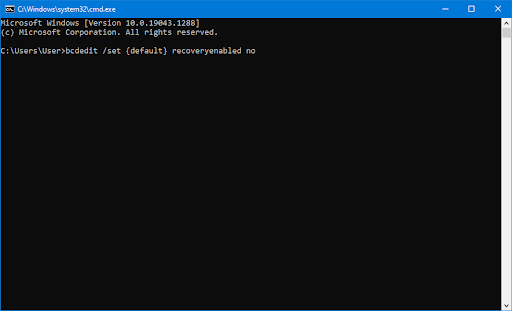
- If the command above doesn’t work, try this alternative:
- bcdedit /set {current} recoveryenabled no

- Restart your PC and check if the Automatic Repair loop still occurs after this adjustment.
By disabling Automatic Repair at boot, you can bypass the repair cycle and allow your computer to boot properly.
Method 5: Run the Fixboot and Chkdsk Commands to Fix the Boot Loop
The fixboot command can help force your computer to boot, potentially fixing startup issues and allowing you to bypass the Automatic Repair loop.
If the fixboot command doesn’t resolve the issue, try using Check Disk (chkdsk) to repair your system. The chkdsk command is designed to scan and repair disk problems, which may help fix the boot loop issue.
Follow these steps:
- Reboot your computer and press the F8 key while the boot screen appears to enter Windows Recovery Environment (WinRE). On some devices, you might need to press the Fn (function) key along with F8.
- From the Choose an option screen, navigate to Troubleshoot > Advanced options > Command Prompt.
- Type the following command and press Enter:
- chkdsk C: /r
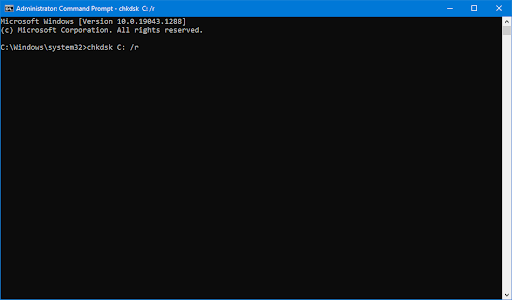
- Wait for the scan to complete. If there was an error or the scan cannot run, use this alternative command:
- fixboot C:
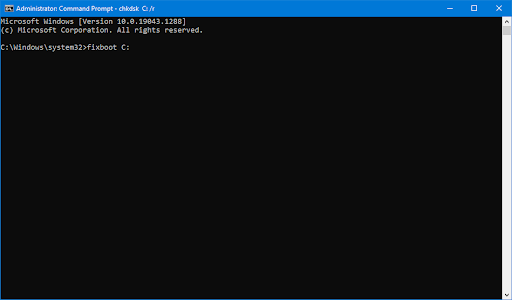
Running the fixboot and chkdsk commands can help resolve disk issues and repair your system, potentially allowing you to escape the Windows 10 boot loop.
Method 6: Repair Corrupted System Files Using SFC
Corrupted system files can cause significant issues with your operating system, including boot loops. The System File Checker (SFC) is a built-in tool in Windows 10 designed to detect and repair these corrupt files, helping to resolve boot issues.
Follow these steps to repair corrupted system files:
- Reboot your computer and press the F8 key while the boot screen appears to enter Windows Recovery Environment (WinRE). If needed, hold the Fn (function) key along with F8.
- From the Choose an option screen, navigate to Troubleshoot > Advanced options > Command Prompt.
- In the Command Prompt, type the following command and press Enter:
- sfc /scannow
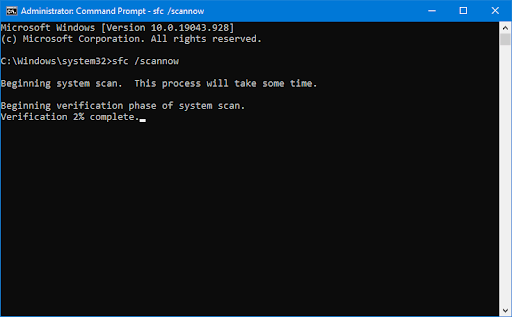
- Wait for the System File Checker to scan your system. If any discrepancies are found, the tool will restore the corrupted files and fix related errors.
- Once the scan is complete, restart your computer to check if the Windows 10 boot loop issue has been resolved.
By using the SFC tool, you can fix corrupted system files and potentially end the “Preparing automatic repair” loop.
Method 7: Restore the Windows Registry
The Windows Registry can become corrupt, often due to malware infections or disk issues, leading to critical system errors like boot loops or blue screen problems. Fortunately, you can easily restore the Registry from the Windows Recovery Environment (WinRE) to fix any missing, misconfigured, or corrupt keys.
Restoring the Windows Registry resets it to its default settings, removing any changes made, whether by you or third-party software.
Follow these steps to restore the Windows Registry:
- Reboot your computer and press the F8 key while the boot screen appears to enter Windows Recovery Environment (WinRE). If necessary, hold the Fn (function) key as well.
- From the Choose an option screen, navigate to Troubleshoot > Advanced options > Command Prompt.
- In the Command Prompt, type the following command and press Enter:
- C:\Windows\System32\config\regback C:\Windows\System32\config*
- When prompted, type All and press Enter to restore and overwrite the default Registry entries.
- Once the process is complete, restart your computer to see if the Windows boot loop is resolved.
Method 8: Reset or Refresh Windows 10
If your PC is stuck in the automatic repair loop, resetting or refreshing Windows 10 is a final resort. You can choose between two options: performing a clean reset (which deletes everything) or keeping your personal files and apps.
We recommend trying to save your data before opting for a full reset.
To reset or refresh Windows 10:
- Reboot your computer and press the F8 key while the boot screen appears to enter Windows Recovery Environment (WinRE). Hold the Fn (function) key on some devices if necessary.
- From the Choose an option screen, navigate to Troubleshoot > Reset this PC.
- Choose one of the available options and follow the on-screen instructions to reset or refresh Windows 10.
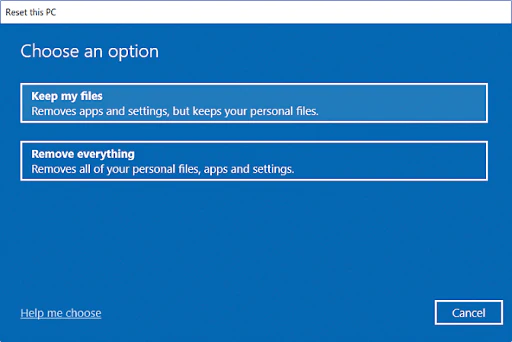
- After the process is complete, you should be able to boot into your system without encountering the boot loop.
Final Thoughts
Dealing with Windows Automatic Repair loops can be frustrating, but with the methods covered in this article, you should be able to resolve the issue. Whether you’re troubleshooting system errors or unable to boot into Windows, these steps will help you get your PC back up and running.
One more thing
If you’re in search of a software company that embodies integrity and upholds honest business practices, your quest ends here at Ecomkeys.com. As a Microsoft Certified Partner, we prioritize the trust and satisfaction of our customers. Our commitment to delivering reliable software products is unwavering, and our dedication to your experience extends far beyond the point of sale. At Ecomkeys.com, we provide a comprehensive 360-degree support system that accompanies you throughout your software journey. Your trust is our foundation, and we’re here to ensure that every interaction with us is a positive and trustworthy one.

